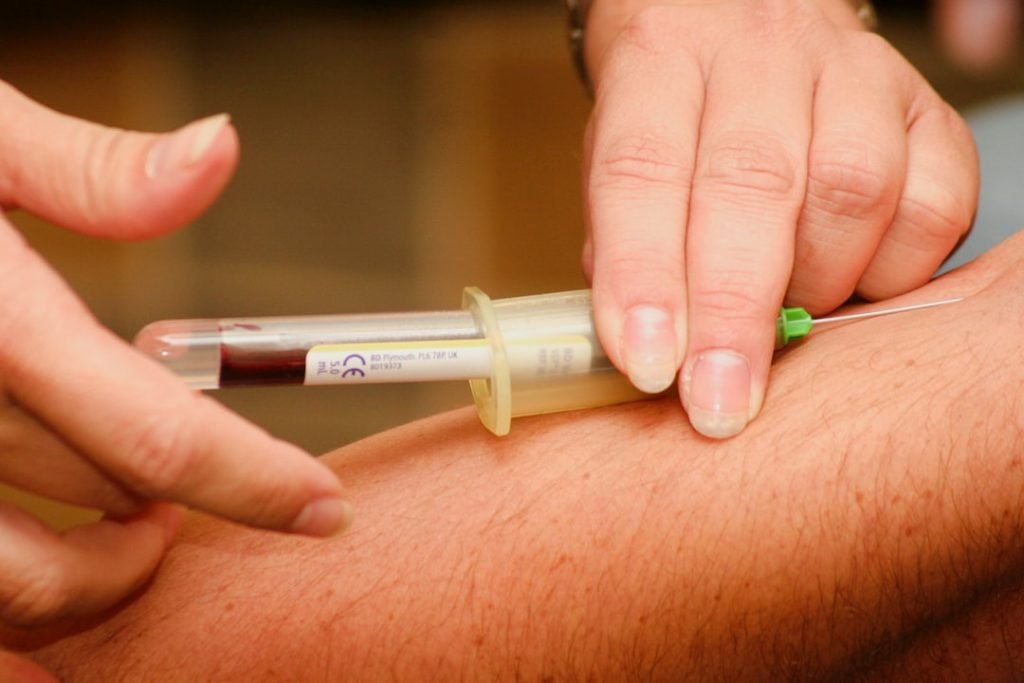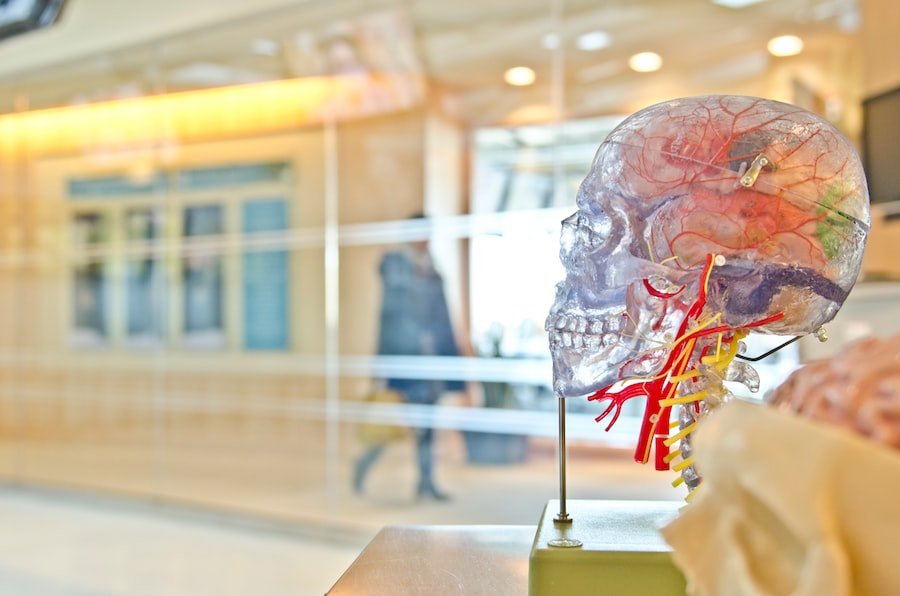

Medical Chinese: Essential Chinese Vocabulary for Healthcare Workers
In recent years, there has been a significant increase in the number of Chinese-speaking patients seeking healthcare services around the world. This trend can be attributed to factors such as globalization, immigration, and medical tourism. As a result, healthcare workers are finding themselves in situations where they need to communicate effectively with Chinese-speaking patients and their families. This is where learning Medical Chinese becomes crucial.
Effective communication is a fundamental aspect of providing quality healthcare. It allows healthcare workers to understand patients’ symptoms, assess their conditions accurately, and provide appropriate treatment and care. However, language barriers can hinder this process and lead to misunderstandings, misdiagnoses, and inadequate care. By learning Medical Chinese, healthcare workers can bridge this gap and ensure effective communication with Chinese-speaking patients.
There are several benefits to learning Medical Chinese for healthcare workers. Firstly, it allows them to establish rapport and build trust with Chinese-speaking patients. When patients feel understood and heard, they are more likely to comply with treatment plans and actively participate in their own healthcare. Secondly, learning Medical Chinese enables healthcare workers to gather accurate medical histories from patients, which is crucial for making informed decisions about their care. Lastly, it enhances cultural competence by demonstrating respect for the patient’s language and culture, which is essential for providing patient-centered care.
Table of Contents
ToggleCommon Medical Terms and Phrases in Chinese
To effectively communicate with Chinese-speaking patients, healthcare workers need to familiarize themselves with basic medical vocabulary in Chinese. This includes terms related to different body parts, symptoms, conditions, medical procedures, tests, medications, and dosages.
Some common medical terms in Chinese include “医生” (yī shēng) for doctor, “护士” (hù shì) for nurse, “病人” (bìng rén) for patient, “医院” (yī yuàn) for hospital, and “药店” (yào diàn) for pharmacy.
When assessing and diagnosing patients, healthcare workers can use phrases such as “你感觉怎么样?” (Nǐ gǎn jué zěn me yàng?) which means “How do you feel?” and “你有什么症状?” (Nǐ yǒu shén me zhèng zhuàng?) which means “What symptoms do you have?”
Examples of medical terms and phrases in Chinese include “头痛” (tóu tòng) for headache, “发烧” (fā shāo) for fever, “咳嗽” (ké sòu) for cough, “胃痛” (wèi tòng) for stomachache, and “感冒” (gǎn mào) for common cold.
Anatomy and Body Parts in Chinese
Understanding the vocabulary for different parts of the body in Chinese is essential for healthcare workers when conducting physical examinations and explaining medical conditions to patients.
Some common anatomical terms in Chinese include “头” (tóu) for head, “眼睛” (yǎn jīng) for eyes, “耳朵” (ěr duo) for ears, “鼻子” (bí zi) for nose, and “嘴巴” (zuǐ bā) for mouth.
Healthcare workers can use these terms to explain medical conditions to patients. For example, they can say “你的胃痛吗?” (Nǐ de wèi tòng ma?) which means “Is your stomach hurting?” or “你的眼睛有问题吗?” (Nǐ de yǎn jīng yǒu wèn tí ma?) which means “Do you have any issues with your eyes?”
Examples of how to use anatomy and body parts vocabulary in Chinese include “手” (shǒu) for hand, “脚” (jiǎo) for foot, “胸部” (xiōng bù) for chest, “背部” (bèi bù) for back, and “腹部” (fù bù) for abdomen.
Symptoms and Conditions in Chinese
Being able to ask about symptoms and conditions in Chinese is crucial for healthcare workers when assessing patients and making diagnoses.
Some vocabulary for common symptoms and conditions in Chinese include “头痛” (tóu tòng) for headache, “发烧” (fā shāo) for fever, “咳嗽” (ké sòu) for cough, “胃痛” (wèi tòng) for stomachache, and “感冒” (gǎn mào) for common cold.
Healthcare workers can ask patients about their symptoms and conditions using phrases such as “你有什么症状?” (Nǐ yǒu shén me zhèng zhuàng?) which means “What symptoms do you have?” or “你感觉怎么样?” (Nǐ gǎn jué zěn me yàng?) which means “How do you feel?”
Examples of how to use symptoms and conditions vocabulary in Chinese include “喉咙痛” (hóu lóng tòng) for sore throat, “呕吐” (ǒu tù) for vomiting, “腹泻” (fù xiè) for diarrhea, “失眠” (shī mián) for insomnia, and “焦虑” (jiāo lǜ) for anxiety.
Medical Procedures and Tests in Chinese
When explaining medical procedures and tests to Chinese-speaking patients, healthcare workers need to be familiar with the relevant vocabulary in Chinese.
Some common medical procedures and tests in Chinese include “血液检查” (xuè yè jiǎn chá) for blood test, “X光检查” (X guāng jiǎn chá) for X-ray, “心电图” (xīn diàn tú) for electrocardiogram, “手术” (shǒu shù) for surgery, and “注射” (zhù shè) for injection.
Healthcare workers can explain these procedures and tests to patients using phrases such as “我们需要做一个血液检查” (Wǒ men xū yào zuò yī gè xuè yè jiǎn chá) which means “We need to do a blood test” or “这个测试不会很痛” (Zhè gè cè shì bú huì hěn tòng) which means “This test won’t be very painful.”
Examples of how to use medical procedures and tests vocabulary in Chinese include “超声波检查” (chāo shēng bō jiǎn chá) for ultrasound, “骨密度检查” (gǔ mì dù jiǎn chá) for bone density test, “胃镜检查” (wèi jìng jiǎn chá) for endoscopy, “心脏超声” (xīn zàng chāo shēng) for echocardiogram, and “CT扫描” (CT sǎo mǎi) for CT scan.
Medications and Dosages in Chinese

Being able to explain medications and dosages to Chinese-speaking patients is crucial for healthcare workers when prescribing and administering treatments.
Some common medications and dosages in Chinese include “药片” (yào piàn) for tablet, “口服液” (kǒu fú yè) for oral liquid, “一天三次” (yī tiān sān cì) for three times a day, “一次两片” (yī cì liǎng piàn) for two tablets at a time, and “每天早上空腹服用” (měi tiān zǎo shàng kōng fù fú yòng) for take on an empty stomach every morning.
Healthcare workers can explain medications and dosages to patients using phrases such as “每天早上吃一片药” (Měi tiān zǎo shàng chī yī piàn yào) which means “Take one tablet every morning” or “每六小时服用一次” (Měi liù xiǎo shí fú yòng yī cì) which means “Take one dose every six hours.”
Examples of how to use medications and dosages vocabulary in Chinese include “止痛药” (zhǐ tòng yào) for painkiller, “抗生素” (kàng shēng sù) for antibiotic, “眼药水” (yǎn yào shuǐ) for eye drops, “每天晚上睡前服用” (měi tiān wǎn shàng shuì qián fú yòng) for take before bedtime every night, and “涂抹在皮肤上” (tú mǒ zài pí fū shàng) for apply on the skin.
Communication with Chinese-Speaking Patients and Families
When communicating with Chinese-speaking patients and their families, healthcare workers need to employ strategies that promote effective communication and overcome language barriers.
One tip for effective communication is to use simple and clear language. Avoid using medical jargon or complex terms that may confuse patients. Instead, use plain language and provide explanations in a step-by-step manner.
Another strategy is to use visual aids such as diagrams, pictures, or charts to enhance understanding. Visual aids can help patients visualize concepts and instructions, making it easier for them to comprehend and follow.
Active listening is also crucial in effective communication. Give patients ample time to express themselves and actively listen to their concerns. This shows empathy and respect, which can help build trust and rapport.
Additionally, healthcare workers can utilize professional interpreters or translation services when necessary. These services can ensure accurate communication between healthcare providers and patients, especially in complex or sensitive situations.
Examples of how to communicate with Chinese-speaking patients and families include using gestures or body language to convey meaning, using simple sentences and avoiding slang or idioms, asking open-ended questions to encourage patients to share more information, and using repetition or paraphrasing to confirm understanding.
Cultural Considerations in Healthcare for Chinese Patients
Cultural differences can significantly impact healthcare for Chinese patients. Healthcare workers need to be aware of these differences and provide culturally sensitive care to ensure patient satisfaction and positive health outcomes.
One cultural consideration is the importance of family involvement in healthcare decisions. In Chinese culture, family members often play a significant role in decision-making and may be present during medical consultations. Healthcare workers should acknowledge and respect this cultural norm by involving family members in discussions and seeking their input.
Another consideration is the concept of “face” or “mianzi” in Chinese culture. “Face” refers to a person’s reputation, dignity, and social standing. Healthcare workers should be mindful of preserving patients’ “face” by providing information and feedback in a respectful and tactful manner.
Additionally, traditional Chinese medicine (TCM) is deeply rooted in Chinese culture and is often used alongside Western medicine. Healthcare workers should be open to discussing TCM with patients and incorporating it into their treatment plans if appropriate.
Examples of how to provide culturally sensitive care to Chinese patients include addressing patients by their formal titles (e.g., Mr., Mrs., or Dr.), acknowledging the presence of family members and involving them in discussions, using non-confrontational communication styles, and being open to discussing TCM practices and treatments.
Resources for Learning Medical Chinese
There are several resources available for healthcare workers who wish to learn Medical Chinese. These resources can help them develop their language skills and improve their ability to communicate effectively with Chinese-speaking patients.
Books and textbooks are also valuable resources for learning Medical Chinese. Some recommended titles include “Medical Mandarin: How to Communicate with Chinese-Speaking Patients and Colleagues” by Grace Wu, “Chinese Medical Terminology” by Nigel Wiseman, and “Chinese Medicine in Contemporary China: Plurality and Synthesis” by Volker Scheid.
In addition, attending language courses or workshops can provide structured learning and opportunities for practice. Many universities and language schools offer Medical Chinese courses or workshops specifically tailored for healthcare professionals.
Examples of useful resources for learning Medical Chinese include the “Chinese for Healthcare Professionals” course offered by the Confucius Institute, the “Medical Chinese Vocabulary” flashcards available on Quizlet, and the “Medical Mandarin” podcast series by Dr. John Chen.
Tips for Using Medical Chinese in the Workplace
To effectively incorporate Medical Chinese into their daily work routines, healthcare workers can employ several strategies and tips.
One strategy is to practice regularly. Consistent practice is key to improving language skills. Healthcare workers can set aside dedicated time each day to review vocabulary, practice conversations, or listen to medical podcasts in Chinese.
Another tip is to seek opportunities for immersion. Immersing oneself in the language and culture can accelerate learning. Healthcare workers can try to find Chinese-speaking colleagues or patients to practice with, watch Chinese medical dramas or documentaries, or even consider traveling to a Chinese-speaking country for a language immersion experience.
Additionally, healthcare workers can create their own personalized vocabulary lists or flashcards. This allows them to focus on specific areas of Medical Chinese that are relevant to their work and helps reinforce learning through repetition.
Examples of how to use Medical Chinese in the workplace include greeting Chinese-speaking patients in their native language, using medical terms and phrases during patient consultations, labeling medical equipment or supplies in both English and Chinese, and providing written materials such as brochures or instructions in Chinese. Additionally, healthcare professionals can use Medical Chinese to ask patients about their medical history, symptoms, and allergies, as well as explain diagnoses, treatment plans, and medication instructions. It can also be helpful to learn common cultural practices and beliefs related to health and wellness in order to provide culturally sensitive care to Chinese-speaking patients. Overall, incorporating Medical Chinese into the workplace can improve communication, build trust, and enhance the overall patient experience for Chinese-speaking individuals.
If you want to learn Chinese, you can register for classes here. We look forward to hearing from you and helping you become fluent in Chinese!
If you want to learn Norwegian, you can register for classes here. We look forward to hearing from you and helping you become fluent in Norwegian.





